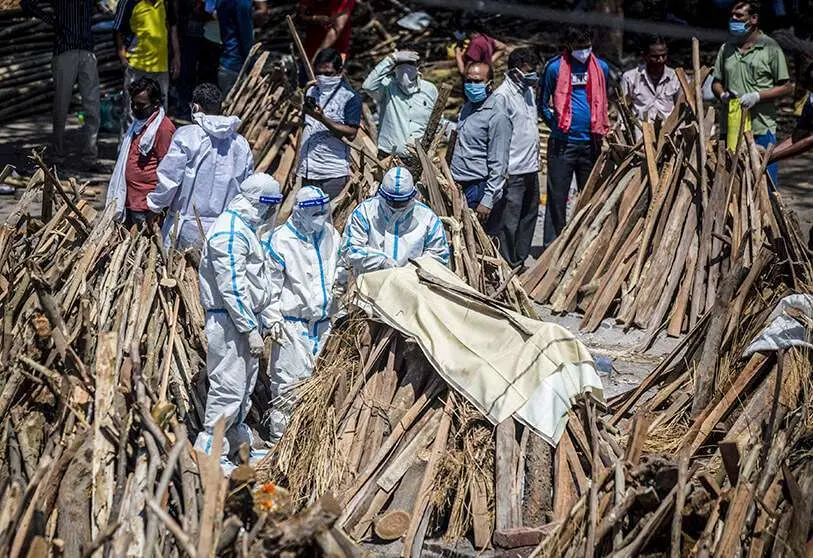India's health crisis: an international catastrophe

If there is one nation that serves as the epitome of contradiction, it is India. With a space programme since 1969 that has sent missions to the moon, nuclear weapons since 1974, and the world's second largest army, India suffers from a health care system that is imploding for all to see as a result of COVID-19. In contrast to the spending typical of a developed economy, India's health expenditure is close to 1% of gross domestic product, making it 179th out of 189 in the ranking of health care prioritisation in the government budget, putting India at the level of per capita spending on health care of the likes of Sierra Leone.
Although the government had a year to prepare for the pandemic wave, it was able to find time to organise its navy's participation in the 'Varuna' naval exercise with France, and take part in the QUAD meeting, the alliance that brings together Australia, the United States, Japan, and India in the face of China's rise in the Asia-Pacific region, while becoming complacent in dealing with the pandemic. Thus, temporary isolation centres were dismantled, social prophylaxis and confinement measures were relaxed, and the rise of remedies promoted by all manner of Hindu holy men went unchecked.
At the same time, the government misinterpreted the epidemic data and embarked on a triumphalist campaign, in a political environment characterised by religious divisions, claiming that the virus had been driven out of the country. Consequently, when the current outbreak made its debut, the Indian healthcare system was unprepared and quickly collapsed, forcing the more fortunate to share hospital beds with others infected, and leaving the more wretched to agonise unattended in hospital car parks. Official figures of 400,000 sufferers have been put at 400,000, although it is taken for granted that this is a fraction of the actual number of sufferers, which continues to rise in an almost vertical curve, now reaching the 30-40 age bracket.
The very casualties among doctors and medical staff, through attrition and illness, have forced the mobilisation of biologists and laboratory technicians, while the shortage of oxygen in hospitals has made it necessary to stop steel production in order to requisition the gas needed by the sick, while Saudi Arabia has chartered 80 tonnes of liquid oxygen to alleviate the situation in the hospitals.
The Prodi government's miscalculation was glaring. On the one hand, by betting everything on mass vaccination it made a critical error, prematurely relaxing restrictions on mobility, mass religious festivals, party rallies, and social life in general, which induced a false sense of confidence that the pandemic was over, and fostered a lack of social precaution. As a result, once the realisation that vaccination does not render health measures to prevent the spread of infection superfluous, the rapid outbreak of severe cases overwhelmed the capacity of intensive care and the health system in general, which had the collateral effect of overwhelming state vaccine production and its logistics, turning the country from a vaccine exporter to a net vaccine importer, and affecting the supply to 60 other poor countries to which India exported vials. Yet less than 1 per cent of a population of over 1.366 billion has been vaccinated to date.
Aside from the dire domestic situation, the consequences of the Indian crisis have international repercussions. On the one hand, India will not be able to scale up its own vaccine production without supplies from third countries, most notably the US. Even if the US agrees to lift both patent and export restrictions on the biochemical compounds that India's vaccine production lines need to continue production, this will have a domino effect that will cause a readjustment of US export capacity for these materials, disrupting vaccine supplies to other countries, such as Latin American and African countries. The calculations of health authorities in many countries were that India would be the world's pharmacy. Finally, the high mobility of the Indian population in the Asian region has set off alarm bells in a wide range of countries, from Bangladesh to Hong Kong, raising international fears that a stagnation of the Asian economy could again create a global supply crisis, as in 2020.

